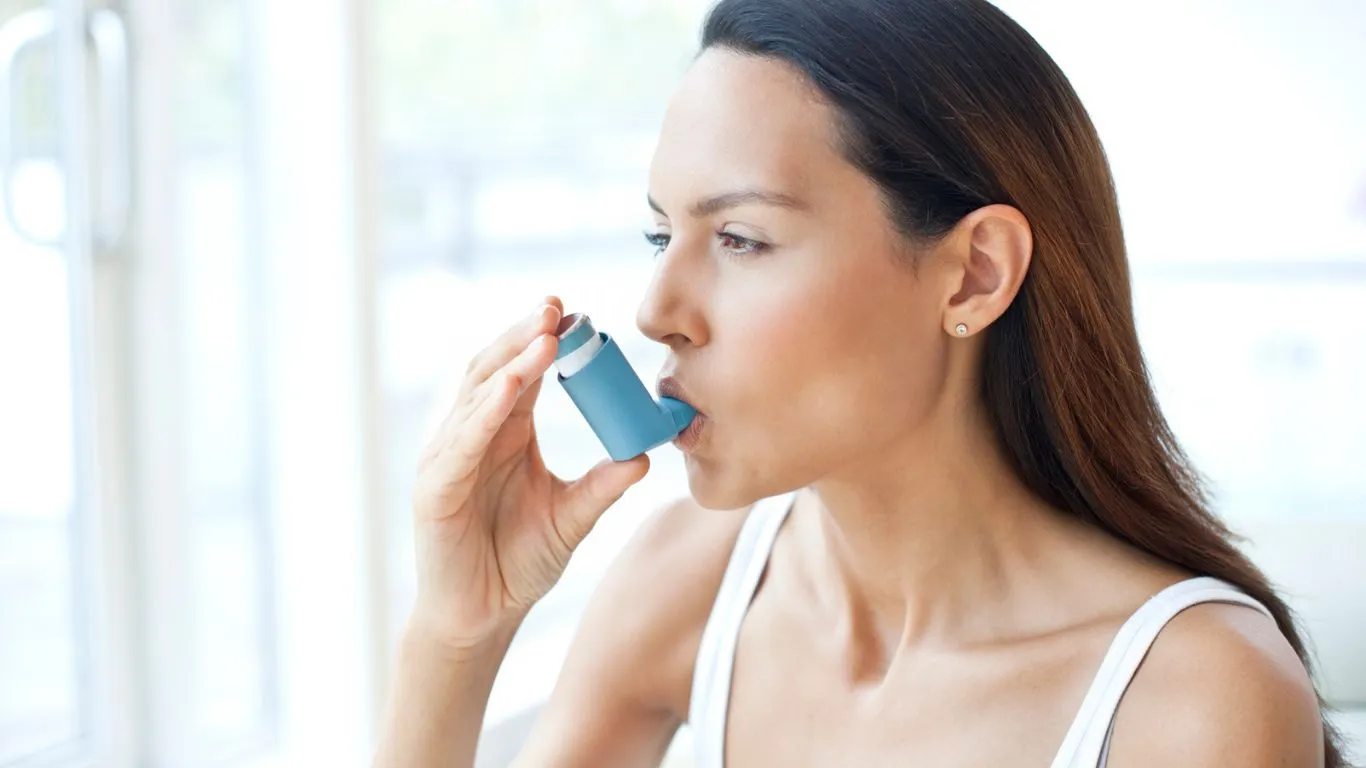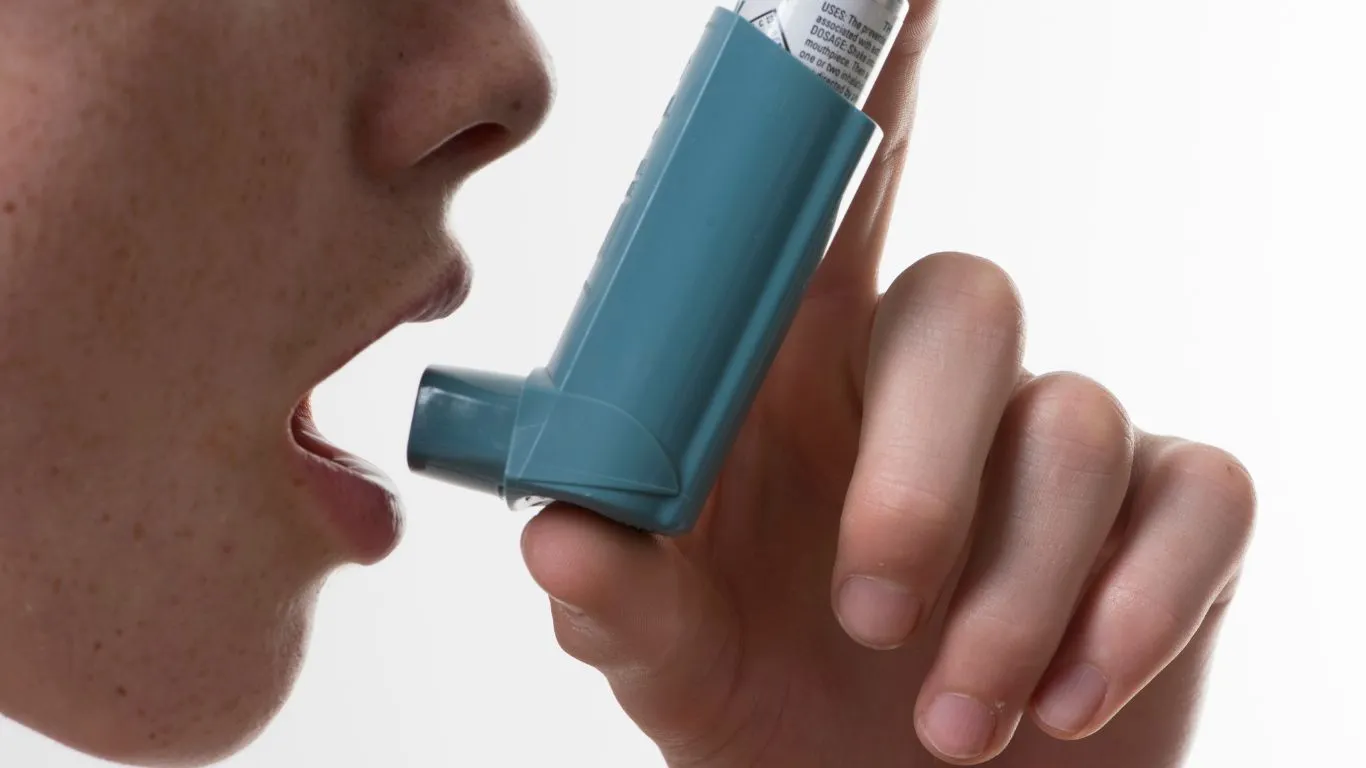Surprising Truth: Can Asthma Cause Flushed Face Symptoms?
If you’ve ever dealt with asthma—whether personally, through a loved one, or like me, from years of experience as a pulmonary nurse practitioner—you know it’s more than just “trouble breathing.” People often expect wheezing and coughing, but something I’ve been asked more than once in clinic is: Can asthma cause flushed face? And honestly, it’s a great question. It’s not usually the first symptom that comes to mind, but yes, facial flushing can show up during asthma episodes, and it’s not always for the reasons people think. Let’s dig into what’s really going on.
What’s the Link Between Asthma and a Flushed Face?

Asthma is a chronic condition that makes your airways inflamed and overly sensitive to things like pollen, dust, exercise, or even cold air. When those airways tighten up, airflow is restricted—which can quickly lead to symptoms like shortness of breath, chest tightness, and that telltale wheeze. But here’s where it gets interesting: your face can get red or flushed during these attacks.
Why? Several reasons, actually. Some of them are physiological, and others are more emotional. One thing I’ve noticed in patients is that they’ll often feel embarrassed or anxious when they can’t catch their breath in public. That anxiety spike alone can cause a flushed face.
1. Increased Blood Flow From Labored Breathing
When someone’s working hard to breathe, the body kicks into high gear. Heart rate increases, respiratory muscles tense up, and blood circulation intensifies. That increased blood flow, especially around the head and neck area, can make the face appear red or flushed. It’s your body trying to deliver more oxygen where it’s needed most.
2. Medications and Flushing Side Effects
If you’ve ever used a bronchodilator like albuterol, you might’ve experienced that jittery, warm sensation right after. Some people, especially kids, even get visibly red in the face. These meds work by relaxing the airway muscles, but they also stimulate the nervous system—which can cause side effects like facial flushing, tremors, or even heart palpitations.
One teen patient I worked with, Josh, would always get this beet-red flush across his cheeks and ears after using his rescue inhaler. Totally harmless, but startling if you didn’t expect it. His mom used to think he was having an allergic reaction until we connected the dots.
3. Emotional Stress and Panic Response
Let’s be real—feeling like you can’t breathe is terrifying. That fight-or-flight response can kick in fast, and along with it comes rapid heart rate, sweating, and yes, a flushed face. It’s all part of the sympathetic nervous system trying to deal with perceived danger.
Even in cases where the asthma is mild, the fear of an attack can trigger facial redness. I’ve had patients come in thinking they were having blood pressure issues or allergic reactions, but once we dug deeper, anxiety tied to asthma was at the root.
Common Scenarios Where Asthma Might Cause Facial Flushing

- Post-inhaler use: Especially with beta-agonists like albuterol or salbutamol.
- During an asthma attack: When oxygen demand spikes and breathing is labored.
- Emotional distress: Panic or fear responses linked to breathlessness.
- Exercise-induced asthma: Flushed face due to both exertion and airway restriction.
Of course, not everyone will experience this symptom—and that’s one of the tricky parts about asthma. It’s incredibly personal. Two people can have completely different experiences, even with similar triggers. That’s why I always encourage folks to keep a symptom diary. It helps spot patterns like facial flushing that might otherwise go unnoticed.
When Is a Flushed Face With Asthma a Red Flag?

Okay, so a bit of redness isn’t always a big deal. But in some cases, it can signal something more serious. If a flushed face comes with other worrying symptoms like bluish lips, chest pain, or confusion, it’s time to take action. Those could be signs of poor oxygenation or a medication reaction.
- If facial flushing is sudden and severe
- If it’s paired with dizziness or fainting
- If it’s followed by skin hives or swelling (possible allergic reaction)
- If it doesn’t resolve after asthma symptoms improve
In my clinic, I always remind patients that it’s better to ask questions—even if it seems like a small thing. I’ve seen minor symptoms lead us to better treatment plans simply because someone trusted their instincts and spoke up.
What Else Might Be Causing That Red Face? It’s Not Always Asthma

Now here’s where things can get a little tricky. A flushed face might feel like it’s tied to asthma, but sometimes, there’s another culprit. As a nurse practitioner, I’ve had to do a bit of medical detective work when patients come in convinced their asthma is acting up—but the red face turns out to be something else entirely.
Let me give you an example. A woman in her late 30s came in saying her cheeks would burn and turn bright pink every time she felt short of breath. Naturally, asthma was the first suspect. But after digging into her history and doing a quick exam, it turned out she was actually dealing with rosacea flares made worse by temperature changes and emotional stress—things that also happen during asthma episodes. Wild, right?
Conditions That Can Mimic or Worsen Flushing
- Rosacea: This chronic skin condition causes persistent facial redness, especially on the cheeks and nose.
- High blood pressure: Sometimes stress-induced spikes can cause sudden facial warmth or flushing.
- Menopause or hormonal changes: Hot flashes can definitely feel like asthma symptoms in the moment.
- Rebound effect from overusing inhalers: Believe it or not, too-frequent bronchodilator use can cause rebound symptoms like flushing.
What I always tell patients is: if you’re not sure, don’t guess. Flushing might seem like a small thing, but it can be your body’s way of waving a little red flag—pun intended. Keep track of when the flushing happens, what you were doing right before, and if it improves with asthma treatment.
How to Track and Talk About Facial Flushing With Your Provider

Here’s some real talk: doctors and nurse practitioners aren’t mind-readers (as much as we’d love to be). So if facial flushing is something you’re noticing during asthma attacks—or even between them—talk about it. Seriously, bring it up at your next appointment.
And better yet, keep a little symptom tracker. I always suggest this to my asthma patients, especially those still figuring out their triggers or trying new meds. It doesn’t have to be fancy. Just jot down:
- When the flushing occurs (before, during, or after symptoms)
- Any recent medication use (especially inhalers or steroids)
- What you were doing at the time (e.g., exercising, stressed, outside in the cold)
- Other symptoms that show up with the flushing
One of my patients started doing this with her smartphone notes, and after two weeks, we spotted a clear connection between her post-exercise asthma symptoms and facial flushing—especially when she skipped her pre-workout inhaler dose. Just a little observation like that helped us tweak her care plan and avoid unnecessary panic.
Can Asthma Cause Flushed Face in Children?

Ah, kiddos. They’re resilient, but they sure can throw curveballs. Can asthma cause flushed face in children? You bet it can—sometimes even more noticeably than in adults. Their systems respond a bit differently, and they’re not always great at describing what they feel. So, we’re left interpreting visual signs like facial flushing.
I remember a 5-year-old I saw in urgent care whose cheeks were bright red during an asthma flare-up. Mom thought he was running a fever, but his temperature was normal. Turns out he was just working really hard to breathe and had just had a dose of albuterol, which was enough to cause that flushed appearance. It passed within 20 minutes, and he was completely fine, but I could see how it’d be alarming if you didn’t know what to expect.
Tips for Parents Managing Asthma and Flushing in Kids
- Don’t panic at the sight of a flushed face—but don’t ignore it either.
- Watch for other symptoms like blue lips, trouble speaking, or chest retractions.
- Time how long the flushing lasts—brief redness after inhaler use is common.
- Bring it up with your child’s pediatrician or asthma specialist.
It helps to snap a quick photo of the flushing if you’re worried. I’ve had parents show me photos during checkups, and it really helps piece things together when the symptoms aren’t present in the office.
Bottom line? Flushed face isn’t always a reason to sound the alarm, but it can give us clues—especially when we look at the bigger picture of asthma control and overall health. So don’t brush it off. Whether you’re an adult managing your own symptoms or a parent watching your little one, noticing these small changes can make a big difference.
Managing Facial Flushing During Asthma: Practical Tips From My Experience

So, you’ve noticed that flushed face during an asthma episode, or maybe you’re worried it might happen. What can you actually do about it? Based on years working hands-on with asthma patients, here are some straightforward tips that can help manage flushing and the asthma itself—because, let’s face it, tackling the root cause is the best way to avoid those unwelcome red cheeks.
1. Stick to Your Asthma Action Plan
I can’t stress this enough: a personalized asthma action plan isn’t just a piece of paper. It’s your roadmap for managing symptoms, avoiding triggers, and knowing when to seek help. When you follow it closely, you reduce the likelihood of severe attacks that cause intense flushing from labored breathing and stress.
For example, if you know exercise tends to trigger your asthma and flushing, pre-medicating with a rescue inhaler as prescribed can make a huge difference. From my experience, patients who consistently use their controller medications as recommended see fewer flare-ups and less intense symptoms overall.
2. Monitor Your Medication Side Effects
Sometimes the flushing isn’t from asthma itself but from the meds we use to control it. Beta-agonists like albuterol are lifesavers, but they can cause temporary redness, jitteriness, and even a fast heartbeat. If you find the flushing bothersome or prolonged, talk to your healthcare provider. They might adjust your dosage or explore alternative treatments.
When I first started using inhalers myself during clinical training, I was surprised by how quickly the flushing could set in after a dose—especially if I used it more often than necessary. It’s a subtle reminder to use these medications thoughtfully.
3. Manage Anxiety and Stress
Asthma and anxiety often go hand-in-hand, which can create a tricky cycle: asthma causes anxiety, anxiety worsens asthma, and both can cause facial flushing. Mindfulness, deep breathing exercises, or even talking with a therapist can make a world of difference. I’ve guided many patients through simple breathing techniques that not only calm their minds but actually improve their breathing patterns during attacks.
One patient, Sarah, told me after learning breathing exercises she felt less panicked during flare-ups—and her face stayed less flushed too. That kind of empowerment is priceless.
When to See a Specialist

If your flushed face during asthma attacks feels out of control, or if you notice other worrying symptoms, it’s time to get a specialist involved. Pulmonologists, allergists, and even dermatologists can work together to sort out the causes and tailor your treatment. Don’t hesitate to advocate for yourself—sometimes it takes a team to get to the bottom of things.
From my clinical standpoint, patients who get specialist evaluations tend to have better outcomes because we can pinpoint triggers more precisely and fine-tune treatments. Whether it’s testing for underlying skin conditions, adjusting inhaler types, or managing anxiety disorders, a multidisciplinary approach often makes the difference.
Wrapping Up: Can Asthma Cause Flushed Face? Yes, But It’s Complex
So, can asthma cause flushed face? Absolutely—but it’s rarely just one simple answer. Flushing can come from physical changes during asthma attacks, medication side effects, emotional stress, or even other overlapping health issues. Understanding your unique pattern and working closely with your healthcare team is the best way to keep symptoms under control.
Remember, I’ve been in your shoes—both as a practitioner and someone who’s seen countless patients wrestle with these questions. Don’t hesitate to ask questions, track your symptoms, and communicate openly with your providers. A flushed face may just be a small clue, but it can lead to better asthma management and peace of mind.
References
- American Lung Association
- Centers for Disease Control and Prevention (CDC) – Asthma
- American Academy of Allergy, Asthma & Immunology
- American Gastroenterological Association (for general health context)
Disclaimer
This article is intended for informational purposes only and does not replace professional medical advice, diagnosis, or treatment. Always consult your healthcare provider with any questions you may have regarding a medical condition or symptoms. The experiences shared here reflect personal clinical observations and are not a substitute for individualized care.

Bianca Nala is a compassionate Nurse Practitioner with a strong background in primary and respiratory care. As a health writer for Healthusias.com, she combines her clinical expertise with a talent for clear, relatable storytelling to help readers better understand their health. Bianca focuses on topics like asthma, COPD, chronic cough, and overall lung health, aiming to simplify complex medical topics without losing accuracy. Whether she’s treating patients or writing articles, Bianca is driven by a single goal: making quality healthcare knowledge accessible to everyone.





